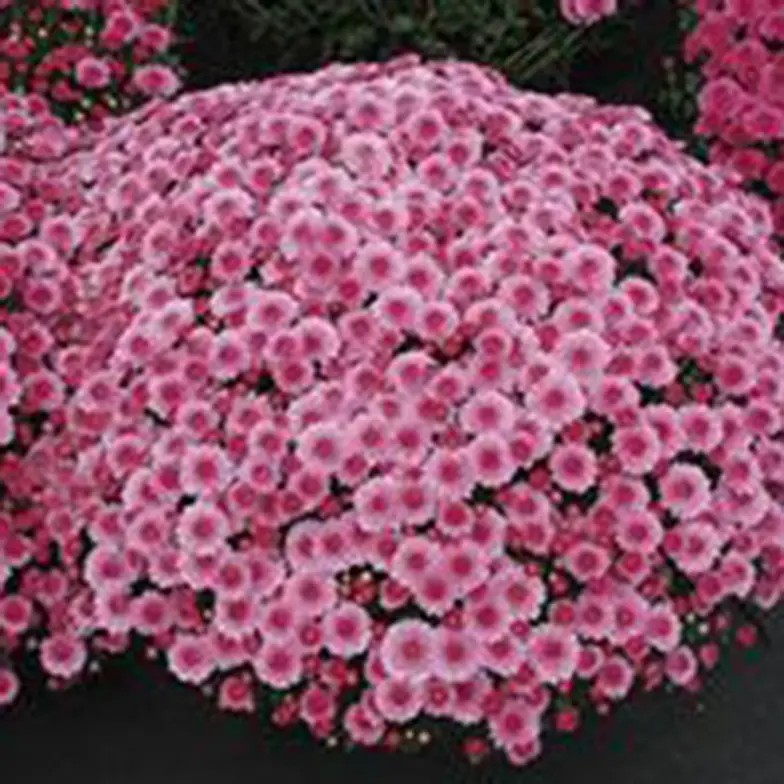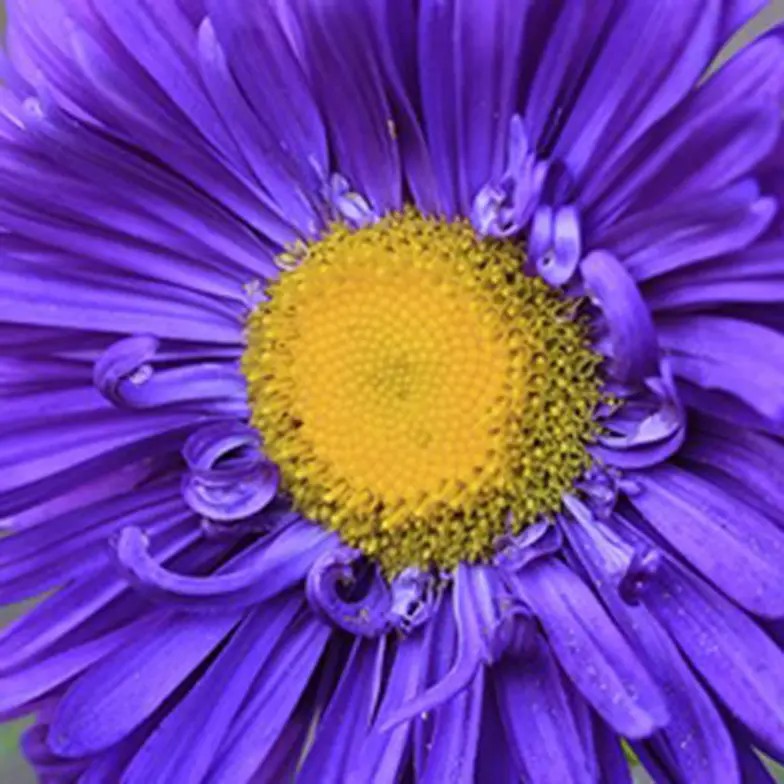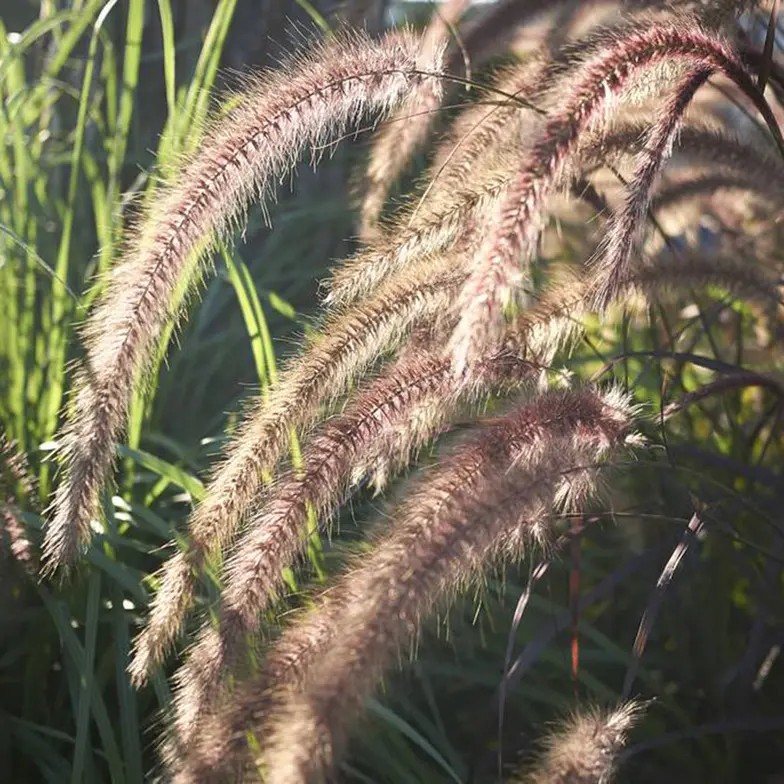Are Mums Pet Safe? Mums, or chrysanthemums, are popular autumn flowers, but their safety for pets raises concerns, so PETS.EDU.VN offers this extensive guide. Discover safe and unsafe fall plants to ensure your furry friends’ well-being. Learn about plant toxicity and pet health for responsible pet ownership.
1. Understanding the Appeal of Mums in Autumn
Mums, scientifically known as Chrysanthemum species, are a favorite choice for adding vibrant colors to gardens and homes during the fall season. These plants come in a wide array of colors, including yellow, orange, red, purple, and white, making them versatile for various landscaping and decorative purposes. Their hardy nature and ability to bloom late in the season, when many other flowers have faded, contribute to their popularity. Mums are also relatively easy to care for, requiring well-drained soil and plenty of sunlight. However, it’s crucial to consider the safety of pets when incorporating these plants into your environment. Understanding the potential risks associated with mums and other fall plants can help pet owners make informed decisions to protect their beloved animals. The ASPCA provides detailed information on toxic and non-toxic plants, helping pet owners create safe and beautiful spaces.
2. Are Mums Pet Safe? Exploring the Toxicity of Mums
Mums are considered mildly toxic to dogs, cats, and horses. According to the ASPCA Animal Poison Control Center, mums contain several compounds that can cause adverse reactions in animals if ingested. These compounds include pyrethrins, sesquiterpene lactones, and other potentially irritating substances. While the toxicity level is generally considered mild, the severity of symptoms can vary depending on the amount ingested and the individual animal’s sensitivity. Common signs of mum poisoning in pets include vomiting, diarrhea, hypersalivation (excessive drooling), incoordination, and dermatitis (skin irritation). It is important to note that even if a pet only nibbles on a mum plant, they may still experience some degree of gastrointestinal upset. Pet owners should be vigilant in monitoring their animals’ behavior and seek veterinary attention if any signs of poisoning are observed after exposure to mums. PETS.EDU.VN advises taking immediate action if you suspect your pet has ingested a toxic plant.
3. Symptoms of Mum Poisoning in Pets
If your pet has ingested mums, watch out for these symptoms:
- Vomiting: Regurgitation of stomach contents.
- Diarrhea: Loose or watery stools.
- Hypersalivation: Excessive drooling or salivation.
- Incoordination: Difficulty walking or maintaining balance.
- Dermatitis: Skin irritation, redness, or itching.
- Loss of Appetite: Refusal to eat or decreased interest in food.
- Lethargy: Unusual tiredness or lack of energy.
- Abdominal Pain: Signs of discomfort in the abdominal area, such as restlessness or guarding the belly.
- Dehydration: Dry gums, sunken eyes, and decreased skin elasticity.
- Weakness: Generalized muscle weakness or trembling.
If you observe any of these symptoms in your pet after potential exposure to mums, it is crucial to seek immediate veterinary attention. Early diagnosis and treatment can significantly improve the outcome and prevent serious complications. PETS.EDU.VN recommends contacting your veterinarian or an animal poison control center for guidance.
4. Treatment Options for Mum Poisoning
The treatment for mum poisoning in pets depends on the severity of the symptoms and the amount of plant material ingested. Here are some common treatment options:
| Treatment | Description |
|---|---|
| Decontamination | If the ingestion occurred recently (within a few hours), your veterinarian may induce vomiting to remove the plant material from your pet’s stomach. |
| Activated Charcoal | Activated charcoal can be administered to absorb any remaining toxins in the gastrointestinal tract, preventing further absorption into the bloodstream. |
| Fluid Therapy | Intravenous fluids may be given to combat dehydration caused by vomiting and diarrhea. |
| Anti-emetics | Medications to control vomiting and nausea can help alleviate discomfort and prevent further fluid loss. |
| Gastroprotectants | Drugs like sucralfate or H2 blockers can protect the lining of the stomach and esophagus from irritation and damage caused by vomiting. |
| Supportive Care | Depending on the symptoms, your pet may need additional supportive care, such as pain medication, antibiotics (if there is a risk of secondary infection), or nutritional support. |



It’s important to follow your veterinarian’s recommendations closely and provide a supportive and comfortable environment for your pet during their recovery. PETS.EDU.VN emphasizes the importance of adhering to professional veterinary advice for the best possible outcome.
5. Safe Alternatives to Mums for Fall Decor
If you are concerned about the potential toxicity of mums to your pets, there are many safe and beautiful alternatives that you can use for your fall decor:
- Asters: These daisy-like flowers come in a variety of colors and are considered non-toxic to pets.
- Pansies: These cheerful flowers can tolerate cool temperatures and are safe for dogs, cats, and horses.
- Russian Sage: With its silvery foliage and purple flowers, Russian sage adds beauty to any garden and is non-toxic to pets.
- Ornamental Grasses: Fountain grass and Karl Foerster feather reed grass are both non-toxic options that provide texture and visual interest.
- Sunflowers: These large, cheerful flowers are generally considered safe for pets, although the seeds can cause gastrointestinal upset if ingested in large quantities.
- Snapdragons: These tall, colorful flowers are non-toxic and add height to flowerbeds and containers.
- Celosia: These unique flowers come in a variety of shapes and colors and are safe for pets.
By choosing these pet-friendly alternatives, you can enjoy the beauty of fall without worrying about the health and safety of your furry companions. PETS.EDU.VN encourages pet owners to research plants thoroughly before introducing them into their homes or gardens.
6. Other Common Fall Plants and Their Toxicity Levels
Besides mums, several other fall plants may pose a risk to pets. Here is a list of common fall plants and their toxicity levels:
| Plant | Toxicity Level | Symptoms |
|---|---|---|
| Red Maple | Toxic to horses | Destruction of red blood cells (anemia), weakness, dark urine, difficulty breathing, abortion, and death. |
| Ginkgo Trees (Female) | Toxic to dogs and cats (seeds) | Vomiting, irritability, and seizures. |
| Rayless Goldenrod | Toxic to horses | Incoordination, muscle weakness and tremors, elevated heart rate, cardiac arrhythmias, and profuse sweating. |
| Autumn Crocus | Highly toxic to dogs, cats, and horses | Severe vomiting, diarrhea, gastrointestinal bleeding, liver and kidney damage, and bone marrow suppression. |
| Cyclamen | Toxic to dogs, cats, and horses | Vomiting, diarrhea, salivation, and potentially heart abnormalities and seizures. |
| Holly | Toxic to dogs, cats, and horses | Vomiting, diarrhea, and depression. |
| Ivy | Toxic to dogs, cats, and horses | Vomiting, abdominal pain, diarrhea, and excessive salivation. |
| Amaryllis | Toxic to dogs, cats, and horses (especially the bulb) | Vomiting, diarrhea, abdominal pain, loss of appetite, and tremors. |
| Chrysanthemum | Mildly toxic to dogs, cats, and horses | Vomiting, diarrhea, hypersalivation, incoordination, and dermatitis. |
| Yew | Extremely toxic to dogs, cats, and horses (all parts of the plant) | Muscle tremors, incoordination, difficulty breathing, and potentially fatal heart failure. |
This table provides a quick reference guide to help you identify potentially harmful plants and take appropriate precautions. Always consult with your veterinarian or the ASPCA Animal Poison Control Center if you suspect your pet has ingested a toxic plant. PETS.EDU.VN is dedicated to providing accurate and up-to-date information on pet safety.
7. Creating a Pet-Safe Garden
Creating a pet-safe garden involves careful planning and plant selection to ensure that your furry friends can enjoy the outdoors without being exposed to harmful substances. Here are some tips for designing a pet-friendly garden:
- Research Plants: Before planting anything, research the toxicity of each plant to ensure it is safe for your pets. The ASPCA Animal Poison Control Center website is an excellent resource for this information.
- Choose Non-Toxic Alternatives: Opt for non-toxic plants such as asters, pansies, Russian sage, ornamental grasses, and sunflowers.
- Create Barriers: Use fencing, raised beds, or containers to keep pets away from potentially toxic plants.
- Provide Safe Spaces: Designate specific areas in your garden where pets can play and explore freely, away from plants.
- Use Pet-Safe Mulch: Avoid using cocoa mulch, as it contains theobromine, which is toxic to dogs. Opt for shredded bark or wood chips instead.
- Store Chemicals Safely: Keep fertilizers, pesticides, and herbicides out of reach of pets, preferably in a locked shed or cabinet.
- Provide Fresh Water: Ensure that your pets have access to fresh, clean water at all times, especially during hot weather.
- Supervise Your Pets: Always supervise your pets when they are in the garden to prevent them from ingesting any harmful plants or substances.
- Educate Yourself and Others: Learn about common garden hazards and share this information with family members and visitors.
- Regularly Inspect Your Garden: Check your garden regularly for any signs of pests, diseases, or potential hazards.
By following these tips, you can create a beautiful and safe outdoor environment for both you and your pets. PETS.EDU.VN is committed to helping pet owners create healthy and happy homes for their animals.
8. The Importance of Pet-Safe Pest Control
When it comes to pest control in your garden or home, it’s crucial to prioritize the safety of your pets. Many common pesticides and herbicides contain chemicals that can be toxic to animals, causing a range of health problems, from mild gastrointestinal upset to severe neurological damage. Here are some tips for pet-safe pest control:
- Use Natural and Organic Products: Opt for natural and organic pest control products that are made from plant-based or mineral-based ingredients. These products are generally safer for pets and the environment.
- Read Labels Carefully: Always read the labels of any pest control products before using them, and follow the instructions carefully. Pay attention to any warnings or precautions regarding pet safety.
- Apply Products When Pets Are Not Present: When applying pesticides or herbicides, remove your pets from the area until the products have dried or settled. This will minimize their exposure to harmful chemicals.
- Store Products Safely: Keep all pest control products out of reach of pets, preferably in a locked cabinet or shed.
- Consider Alternatives: Explore alternative pest control methods, such as introducing beneficial insects, using traps, or hand-picking pests off plants.
- Hire a Pet-Safe Pest Control Service: If you are not comfortable handling pest control yourself, hire a professional service that uses pet-safe products and techniques.
- Monitor Your Pets for Signs of Poisoning: If you suspect that your pet has been exposed to a pesticide or herbicide, watch for signs of poisoning, such as vomiting, diarrhea, tremors, or seizures, and seek immediate veterinary attention.
- Clean Up Spills Immediately: If any pest control products spill, clean them up immediately using appropriate cleaning agents and dispose of the waste properly.
- Avoid Using Baits: Baits can be attractive to pets and may contain toxic ingredients. If you must use baits, place them in areas that are inaccessible to pets.
- Educate Yourself: Learn about common pests in your area and the best ways to control them without harming your pets.
By following these guidelines, you can protect your pets from the harmful effects of pesticides and herbicides while still keeping your garden and home pest-free. PETS.EDU.VN is dedicated to promoting responsible pet ownership and providing valuable resources for pet owners.
9. Recognizing and Preventing Plant-Related Dangers
Preventing plant-related dangers to your pets involves vigilance and proactive measures. Here’s how to stay ahead:
- Education is Key: Familiarize yourself with common toxic plants in your area and those you might bring into your home.
- Secure Your Home and Garden: Use fences, barriers, and raised beds to keep pets away from potentially harmful plants.
- Supervision is Essential: Always supervise your pets, especially puppies and kittens, when they are around plants.
- Know the Symptoms: Be aware of the signs of plant poisoning in pets, such as vomiting, diarrhea, and lethargy.
- Emergency Contacts: Keep the phone number of your veterinarian and the ASPCA Animal Poison Control Center readily available.
- Proper Disposal: Dispose of plant trimmings and fallen leaves properly, as they may still contain toxins.
- Regular Inspection: Regularly inspect your garden and home for any signs of plant damage or pest infestation.
- Safe Landscaping: Choose pet-friendly landscaping options, such as ornamental grasses and non-toxic shrubs.
- First Aid Kit: Keep a pet first aid kit on hand, including activated charcoal and other essential supplies.
- Community Awareness: Share your knowledge with neighbors and friends to create a safer environment for all pets.
By taking these steps, you can minimize the risk of plant-related dangers to your pets and ensure their well-being. PETS.EDU.VN is committed to providing pet owners with the information and resources they need to keep their animals safe and healthy.
10. Expert Advice on Pet-Safe Gardening from PETS.EDU.VN
At PETS.EDU.VN, we understand the importance of creating a safe and enjoyable environment for your pets. Our team of experts has compiled the following advice to help you create a pet-safe garden:
- Consult with a Veterinarian: Before making any changes to your garden, consult with your veterinarian to ensure that the plants you choose are safe for your pets.
- Choose Native Plants: Native plants are often more resistant to pests and diseases, reducing the need for harmful chemicals.
- Use Organic Fertilizers: Opt for organic fertilizers that are safe for pets and the environment.
- Avoid Using Herbicides: Herbicides can be toxic to pets, so avoid using them whenever possible.
- Create a Designated Digging Area: If your dog loves to dig, create a designated digging area where they can satisfy their natural instincts without damaging your plants.
- Provide Shade: Make sure your pets have access to shade in the garden, especially during hot weather.
- Use Raised Beds: Raised beds can help keep pets away from plants and make gardening easier.
- Consider Container Gardening: Container gardening is a great way to grow plants in a small space and keep them out of reach of pets.
- Mulch Wisely: Use pet-safe mulch, such as shredded bark or wood chips, to suppress weeds and retain moisture.
- Monitor Your Pets: Always monitor your pets when they are in the garden to ensure they are not ingesting any harmful plants or substances.
By following this expert advice, you can create a beautiful and safe garden that both you and your pets can enjoy. At PETS.EDU.VN, we are dedicated to providing pet owners with the information and resources they need to create healthy and happy homes for their animals.
FAQ: Are Mums Pet Safe?
1. Are mums safe for dogs to eat?
Mums are mildly toxic to dogs and can cause vomiting, diarrhea, and skin irritation if ingested.
2. What happens if a cat eats mums?
Cats that eat mums may experience vomiting, diarrhea, excessive drooling, and incoordination.
3. Are all types of chrysanthemums toxic to pets?
Yes, all types of chrysanthemums are considered mildly toxic to pets due to the presence of pyrethrins and sesquiterpene lactones.
4. What should I do if my pet eats mums?
Contact your veterinarian or an animal poison control center immediately for guidance.
5. Are there any fall plants that are completely safe for pets?
Yes, some safe alternatives include asters, pansies, and Russian sage.
6. How can I keep my pets away from toxic plants in the garden?
Use fencing, raised beds, or containers to create barriers between your pets and potentially harmful plants.
7. Is it safe to use pesticides around pets?
Many pesticides are toxic to pets, so opt for natural and organic pest control products whenever possible.
8. Can eating mums cause long-term health problems in pets?
While mum poisoning is usually mild, repeated ingestion can lead to more severe gastrointestinal issues.
9. What are the symptoms of plant poisoning in horses?
Symptoms can include incoordination, muscle weakness, elevated heart rate, and difficulty breathing.
10. Where can I find more information about pet-safe gardening?
Visit PETS.EDU.VN for expert advice and resources on creating a safe and healthy environment for your pets.
For further information and expert advice on pet safety and care, visit PETS.EDU.VN or contact us at 789 Paw Lane, Petville, CA 91234, United States, or WhatsApp at +1 555-987-6543.
Are you concerned about the safety of your beloved pets? Do you find it challenging to navigate the overwhelming amount of information on pet care? Are you worried about unusual behaviors in your furry friend and unsure how to address them? Do you seek reliable and high-quality pet care services in your area? Are you eager to deepen your understanding of your pet’s unique needs and characteristics?
At PETS.EDU.VN, we offer comprehensive and easily understandable information on caring for various types of pets. We address your concerns regarding nutrition, health, and behavior. We provide guidance on effective training methods and interaction techniques. Additionally, we introduce you to reputable pet care services, including veterinary clinics and pet spas.
Visit pets.edu.vn today to discover a wealth of resources and services tailored to meet all your pet care needs. Your pet’s well-being is our top priority.
